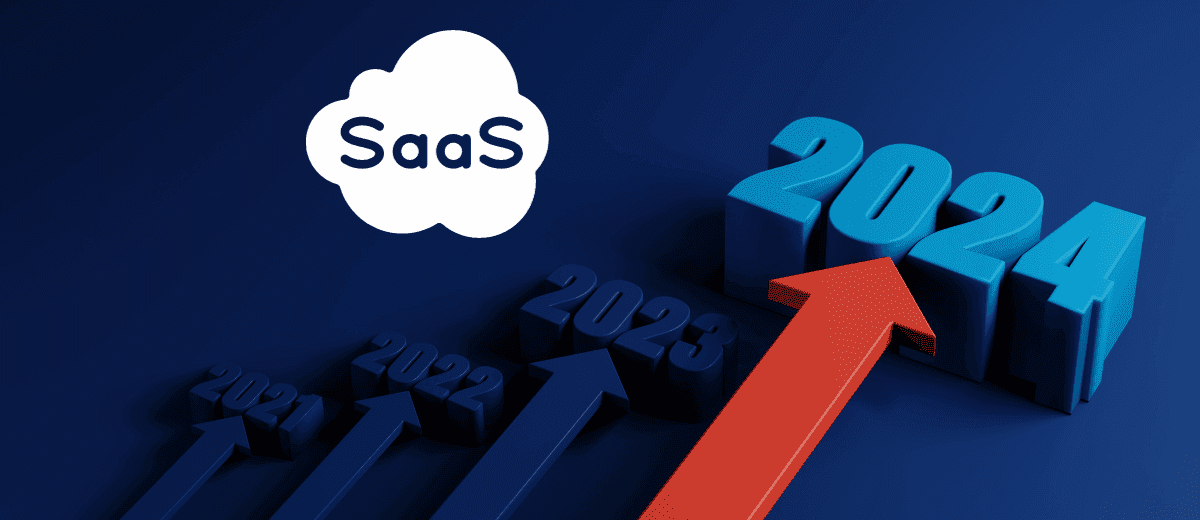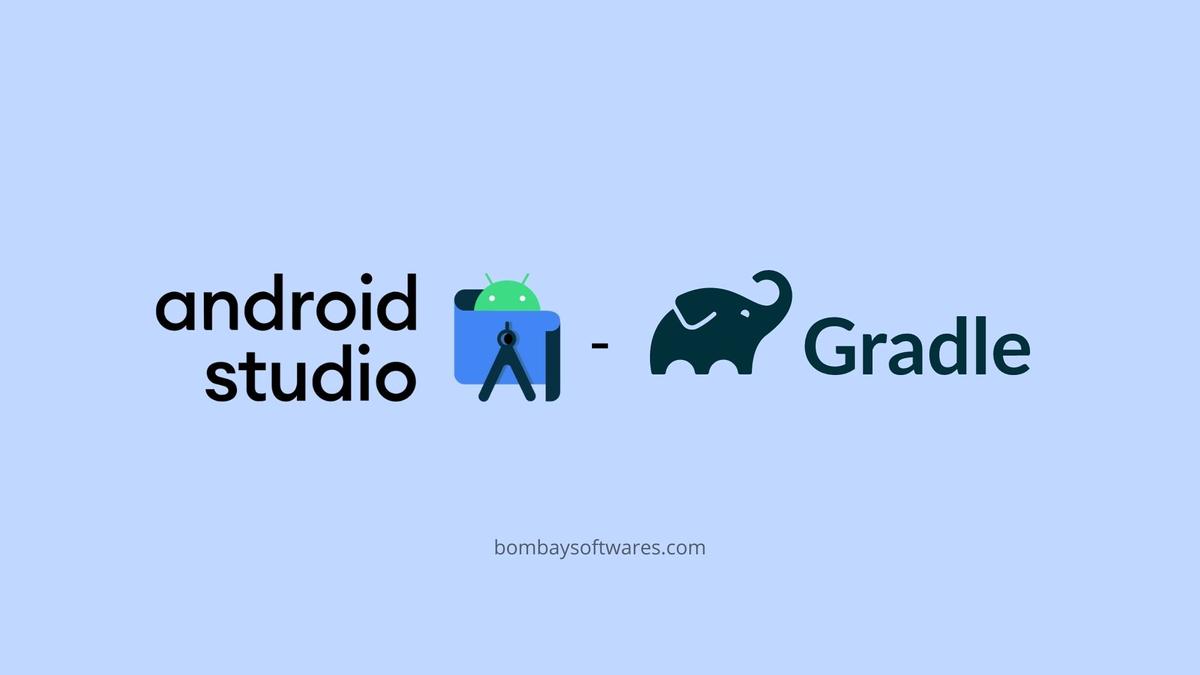- 13th Oct, 2021
- Farhan S.
Future of SaaS: Key Predictions and Trends for 2024
22nd Dec, 2023 | Arjun S.
- Software Development

In the digital era, the Software as a Service (SaaS) industry stands as a technological vanguard, driving innovation and transforming the way businesses operate.
Take a quick glance around, and you'll see the popularity of Zapier, Asana, Salesforce, HubSpot, and a host of other SaaS automation tools transforming the digital universe.
With a whopping 90% of organizations recognizing SaaS as a key player in adopting new technology, it's pretty clear: we're in the middle of a tech revolution.
The future of SaaS is shaping up to be nothing short of revolutionary, and we're about to spill the digital tea on the key predictions and trends that are set to define this landscape in the coming year.
So, grab your virtual explorer hat as we dive into the exciting prospects that await us in the SaaS-scape of 2024!
Current State of the SaaS Market
In the ever-evolving landscape of technology, the Software as a Service (SaaS) market stands out as a powerhouse, shaping the way businesses operate and innovate.
Let's delve into the key dynamics that define the current state of the SaaS market.
1. Market Size & Growth
The SaaS (Software as a Service) market is growing really fast!
In 2023, it's worth $197 billion, which is 66% more than last year. And it's not stopping there – experts think it will be worth a huge $232 billion by 2024.
This shows that businesses are depending more and more on SaaS solutions to run their operations.
2. Sector Expansion
Diversity is the name of the game when it comes to SaaS growth. Sectors such as healthcare, finance, and education are adapting SaaS with open arms, each witnessing unique applications and innovations tailored to their specific needs.
Investments in SaaS are following suit, with the volume projected to reach $591.8 billion by 2023, a substantial increase from $490.3 billion in 2022. This expansion across sectors emphasizes the adaptability and versatility of SaaS solutions.
3. Geographical Spread
SaaS (Software as a Service) is getting popular not just in North America, but also in places like Asia-Pacific and Europe.
More and more businesses around the world are realizing how useful SaaS is. This means SaaS is spreading out to different parts of the world, making the digital future more inclusive.
4. Investment Influx
Lots of money from venture capitalists is going into SaaS companies. In 2023, they gave a huge $221 billion to SaaS, which is a record!
This shows that investors believe SaaS will keep growing and coming up with new ideas. The money helps existing SaaS companies get bigger and lets new ones and new technologies get started.
5. User Adoption
It's not just businesses that are adapting the SaaS model; users are, too.
A recent survey revealed that the average enterprise now uses over 100 SaaS applications, marking a doubling of this number in just a few years.
This staggering statistic highlights the integral role that SaaS plays in the daily operations and efficiency of businesses across various sectors.
6. Remote Work Boost
The global shift towards remote work has been a boon for the SaaS market. Tools facilitating remote collaboration have experienced a remarkable 45% spike in usage.
From communication platforms to project management tools, SaaS solutions have become indispensable in enabling seamless collaboration and productivity in the era of remote work.
Factors Influencing SaaS Trends in 2024 and Beyond
The SaaS industry is not just witnessing growth; it's undergoing a transformative evolution.
As we peer into the future, 2024 promises to be a pivotal year for SaaS, driven by several key trends that are reshaping the landscape.
Let's explore a few predictions that will influence the SaaS market in the coming years.
1. Increased Adoption of Vertical SaaS
The era of one-size-fits-all SaaS solutions is waning, making way for the rise of Vertical SaaS. Industries are increasingly recognizing the value of specialized, niche-market services tailored to unique customer needs.
Companies are providing cloud-based solutions designed for specific sectors like pharmaceuticals, construction, and hospitality.
As we venture into 2024, expect a surge in digital tools and software apps catering to specific business functions, enhancing efficiency across various industries.
2. Growth of Low and No-Code Platforms
Traditional programming is undergoing a seismic shift, with low and no-code development becoming game-changers in the SaaS industry.
This innovative approach involves using UI templates and pre-built components for app development, with platforms like Zapier leading the charge in enabling users to automate workflows without coding knowledge.
By 2024, nearly 65% of all app development is predicted to be driven by no/low-code platforms. This shift signifies a departure from conventional programming methods, heralding a future where development becomes more accessible and agile.
The ease of use and rapid deployment associated with these platforms will likely make them the preferred choice for application development.

Image Source: SaaS
3. Rise of Voice and Conversational User Interfaces (UI)
Real-time interaction with customers through digital platforms is evolving, thanks to the integration of voice and conversational UIs in SaaS platforms.
Leveraging natural language processing (NLP) and voice recognition technologies, these interfaces enable users to interact with computer devices and software programs using spoken language.
The integration of voice assistants like Amazon Alexa and Google Assistant into SaaS products is just the beginning.
In the coming years, expect widespread adoption of voice and conversational UIs across industries, offering improved user experiences, increased efficiency, and enhanced accessibility. This evolution marks a paradigm shift in how we engage with SaaS applications.

Image Source: SaaS
4. Rapid Growth of Micro-SaaS
Micro-SaaS, the pint-sized sibling of traditional SaaS, is gaining momentum. Known for its focus on niche markets, low barriers to entry, and specialization, Micro-SaaS platforms cater deliberately to small businesses with specific needs.
These platforms provide agility and flexibility, allowing businesses to address the unique requirements of smaller customer segments.
In 2024, the proliferation of Micro-SaaS platforms will empower small businesses to serve targeted customer pockets effectively.
This approach represents the future of lifestyle software businesses, offering tailored solutions that resonate with the demands of niche markets.
5. Increased Legal and Regulatory Compliance
As the SaaS industry matures, legal and regulatory compliance is becoming paramount. The evolving business landscape demands a robust framework to ensure consumer and business protection.
While there may be existing inconsistencies in the regulatory landscape, a noticeable trend is the rise in compliance efforts among SaaS companies.
Issues such as GDPR compliance in European markets and the Health Insurance Portability and Accountability Act (HIPAA) in the US are shaping the legal landscape for global SaaS providers.
The focus on data privacy, network security, contractual obligations, and industry-specific regulations is expected to intensify.
Businesses in the SaaS space must brace for increased legal scrutiny and financial implications, emphasizing the need for comprehensive compliance strategies.
Tips for SaaS Companies: Preparing for the Future
With rapidly changing market dynamics, customer expectations, and technological advancements, preparing for the future has never been more critical.
Here are some strategic tips to help SaaS companies stay ahead and thrive in the dynamic landscape that lies ahead.
1. Embrace Agility and Adaptability
In a world where change is the only constant, SaaS companies must adopt an agile mindset. This means being flexible and quick to adapt to market shifts, emerging technologies, and customer demands.
Establishing a culture that encourages experimentation and continuous improvement will position your company to respond effectively to unforeseen challenges and capitalize on new opportunities.
2. Invest in Robust Cybersecurity
As SaaS companies handle sensitive customer data, the importance of cybersecurity cannot be overstated. Invest in state-of-the-art cybersecurity measures to protect your platform and user information.
Regularly update security protocols, conduct thorough risk assessments, and educate your team on best practices to ensure that your SaaS offering remains a trustworthy solution for your customers.
3. Prioritize Customer Experience
Customer experience is a key differentiator in the SaaS industry. Focus on understanding your customers' needs and pain points, and continually refine your product to address these effectively.
Implement user-friendly interfaces, provide excellent customer support, and gather feedback to enhance your platform. A satisfied customer is more likely to be a loyal customer, contributing to long-term success.
4. Harness the Power of Data
Data is the lifeblood of SaaS companies. Leverage data analytics to gain valuable insights into user behavior, preferences, and market trends. Use this information to make informed decisions, improve your product, and tailor your marketing strategies.
As artificial intelligence continues to advance, consider integrating machine learning algorithms to optimize your SaaS solution and provide a more personalized user experience.
5. Build Strategic Partnerships
Collaboration can be a powerful tool for SaaS companies looking to secure their future. Identify potential strategic partners, both within and outside your industry, to expand your reach and capabilities.
Partnerships can open doors to new markets, enhance product offerings, and foster innovation through shared knowledge and resources.
Conclusion
In the ever-evolving world of SaaS, staying ahead means embracing change and gearing up for what lies ahead. As we look at the present state of the SaaS market and the factors shaping its future, it's clear that adaptability is the name of the game.
SaaS companies, thriving in diversity, are gearing up for a future where AI takes the lead, flexible cloud strategies are the norm, and personalized solutions are a game-changer.
So, in this ever-shifting SaaS narrative, simplicity becomes the secret sauce. It's not just about keeping up; it's about staying agile, embracing change, and simplifying the future.
FAQs
1. What disruptive forces could reshape the SaaS landscape in 2024?
Disruptive forces in 2024 are poised to reshape the SaaS landscape significantly. Hyper-specialization will cater to specific industry needs, niche AI integration will enhance functionalities, and the adoption of blockchain promises transparent and secure data management.
2. Will the focus shift from horizontal SaaS platforms to industry-specific solutions?
Absolutely. The SaaS trend is steering towards industry-specific solutions. Vertical SaaS is gaining prominence, tailoring offerings to meet the unique needs of sectors such as healthcare, manufacturing, and education.
3. How will the economic downturn impact SaaS growth and pricing models?
While economic downturns pose challenges, certain SaaS sectors may prove recession-proof.
Essential services like cloud collaboration tools, cybersecurity, and remote work solutions may experience continued growth despite economic uncertainties.
4. To what extent will AI personalize the SaaS user experience?
AI is set to revolutionize user experiences in SaaS. Expect AI-powered assistants for intuitive interactions, smart recommendations based on user behavior, and automated workflows streamlining processes for a more personalized and efficient user journey.
5. Is SaaS the missing piece for bridging the gap between humans and AI?
Indeed, SaaS acts as a bridge between humans and AI. SaaS tools facilitate seamless collaboration, enabling users to harness AI capabilities for improved decision-making, efficiency, and innovation.
6. How will blockchain technology revolutionize security and data ownership in SaaS?
Blockchain technology is set to revolutionize security and data ownership in SaaS by providing transparent data trails and decentralized app stores. This ensures enhanced security, transparency, and ownership control for SaaS users.
More blogs in "Software Development"
- 26th Mar, 2021
- Jay R.
Bluetooth Low Energy (BLE) in iOS: A Comprehensive Guide
- 24th Apr, 2024
- Kinjal D.
Saudi Arabia's ICT Potential in a Growing Digital Landscape
Join our Newsletter
Get insights on the latest trends in technology and industry, delivered straight to your inbox.









